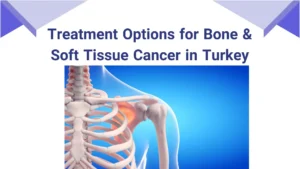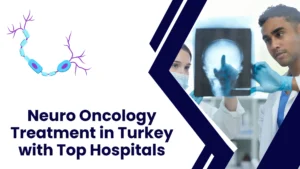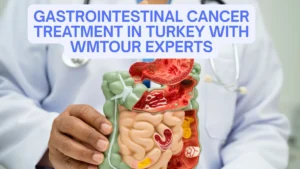Gallbladder Disease: Your Guide to Symptoms, Treatment & Medical Tourism
Gallbladder disease can be painful and disruptive. This comprehensive guide, from the specialists at Wmedtour, explains the symptoms, causes, and various treatment options, including affordable, high-quality gallbladder removal surgery (cholecystectomy) available through medical tourism.
Your gallbladder plays a crucial role in the digestive process by storing and concentrating bile. However, when problems arise, such as the formation of gallstones, it can lead to significant discomfort and serious health issues. Consequently, understanding the symptoms and seeking timely medical attention are vital for your well-being. This page explores what gallbladder disease is, what causes it, and how it can be effectively managed, with a special focus on surgical solutions offered through Wmedtour’s international network.
What is Gallbladder Disease?
Gallbladder disease is a broad term covering a number of conditions that can affect your gallbladder. These conditions range from inflammation (cholecystitis) to the formation of small, hard deposits known as gallstones (cholelithiasis). These issues can lead to severe pain, digestion problems, and even life-threatening complications. In many cases, these conditions develop gradually, and a person may not notice any symptoms until the problem becomes severe. Additionally, the risk factors for developing gallbladder issues include diet, genetics, and obesity. The prevalence of these conditions makes it a significant health concern globally, especially in regions where dietary habits contribute to their development.
Common Types of Gallbladder Problems
The most frequent issue is the presence of gallstones, which can be small as a grain of sand or large as a golf ball. They form when substances in bile, like cholesterol and bilirubin, harden into solid particles. Subsequently, when these stones obstruct the bile ducts, they can cause a sudden, intense pain known as a gallbladder attack. In contrast, if the gallbladder becomes infected or inflamed, it’s called cholecystitis, which requires prompt medical care. Other, less common conditions include gallbladder cancer, though this is quite rare. All in all, early diagnosis is key to effective treatment. For more detailed information, consult the National Institute of Diabetes and Digestive and Kidney Diseases (NIDDK).
Recognizing the Symptoms of Gallbladder Problems
The symptoms of gallbladder disease can vary widely in severity, but they are most often characterized by pain. A gallbladder attack, for instance, is marked by a sudden and intense pain in the upper right part of your abdomen. This pain can radiate to your back or shoulder and may last for several hours. Sometimes, the pain can feel similar to indigestion or a heart attack, which can make it confusing to diagnose initially. Therefore, it is important to pay close attention to the location and nature of your discomfort.
Signs and Symptoms to Look For
- Intense abdominal pain: A sharp, cramping pain in the upper right or center of your abdomen.
- Referred pain: Pain that spreads to your back or right shoulder blade.
- Nausea and Vomiting: These symptoms frequently accompany the pain.
- Fever and chills: A sign of infection, indicating a more serious condition like cholecystitis.
- Jaundice: A yellowing of the skin and eyes, which occurs when a bile duct is blocked.
- Chronic Digestive Issues: Persistent indigestion, bloating, or intolerance to fatty foods.
If you experience any of these symptoms, especially a severe gallbladder attack, you must seek medical attention immediately. While some mild cases can be managed with medication, surgery is often the most effective and permanent solution. Notably, the decision to undergo surgery should be made in consultation with a qualified medical professional.
Medical Treatment and Surgical Options
For most patients, the definitive treatment for symptomatic gallstones is surgical removal of the gallbladder, a procedure called a cholecystectomy. This operation is one of the most common surgical procedures performed globally. Today, most cholecystectomies are performed laparoscopically, which is a minimally invasive technique. This modern approach involves making several small incisions in the abdomen, inserting a tiny camera and surgical tools. Ultimately, this leads to less pain, a shorter hospital stay, and a faster recovery compared to traditional open surgery. Johns Hopkins Medicine offers an excellent resource on this procedure.
Preparing for Your Gallbladder Surgery (Cholecystectomy)
How to Prepare for Gallbladder Surgery (Cholecystectomy)
Preparing for a cholecystectomy involves several key steps to ensure a smooth procedure and recovery. The following guide helps you understand what to do before and after your surgery.
Step 1: Consult with Your Doctor
First, discuss your medical history, current medications, and any supplements with your surgeon. They will provide specific instructions on what to eat, drink, or avoid in the days leading up to your surgery.
Step 2: Follow Pre-Operative Instructions
Typically, you will be told to fast for a certain period before the procedure. It is critical to adhere to these instructions precisely to avoid any complications during the anesthesia.
Step 3: Arrange for Post-Surgery Support
Plan for a friend or family member to drive you home after the surgery. Also, arrange for help around the house for the first few days, as you will need time to rest and recover. It’s smart to prepare some light meals in advance.
Step 4: Understand the Recovery Process
After a laparoscopic cholecystectomy, recovery is generally quick. You may experience some pain at the incision sites and shoulder pain from the gas used during the procedure. Your doctor will prescribe pain medication and provide guidance on when you can resume normal activities and exercise. Follow their recommendations carefully.
Medical Tourism for Gallbladder Surgery
For many patients, the cost of healthcare is a major concern. Due to this, a growing number of people are turning to medical tourism for high-quality, affordable treatments. Wmedtour offers an excellent solution by connecting you with top-tier hospitals and experienced general surgeons in countries known for their advanced healthcare systems. This includes destinations like Iran, India, and Turkey, which provide significant savings without compromising on quality or safety. The Mayo Clinic provides further details on the cholecystectomy procedure itself.
Why Choose Wmedtour for Your Cholecystectomy?
Wmedtour provides comprehensive services that simplify the entire medical tourism journey. We handle everything from finding the right surgeon and hospital to arranging your travel, accommodation, and post-operative care. This ensures a stress-free experience, allowing you to focus completely on your recovery. Our partner hospitals maintain high standards of care and use state-of-the-art medical technology. We are committed to making quality healthcare accessible and affordable for everyone. Our professional team is available to guide you every step of the way. Explore Wmedtour’s general surgery services for more information.
Comparison of Cholecystectomy Costs by Country
| Country | Estimated Cost (USD) | Why Choose This Country? |
|---|---|---|
| Iran | $1,500 – $3,000 | Known for highly skilled surgeons and modern, accredited hospitals at exceptionally low prices. Ideal for those seeking the most affordable option without sacrificing quality. |
| India | $2,000 – $4,500 | A popular medical tourism hub with internationally accredited hospitals and English-speaking staff. It offers a wide range of services and competitive pricing. |
| Turkey | $3,000 – $6,000 | Blending advanced technology and high standards of care with a rich cultural experience. Many facilities are JCI-accredited, ensuring world-class service and patient safety. |
Frequently Asked Questions
Q: What is the gallbladder’s main function?
A: The gallbladder is a small organ located under your liver. Its primary function is to store and concentrate bile, a digestive fluid produced by the liver, which it releases into the small intestine to help digest fats.
Q: What causes gallstones to form?
A: Gallstones form when cholesterol or bilirubin in your bile hardens into solid, stone-like particles. This can happen if your bile contains too much cholesterol, too much bilirubin, or if the gallbladder doesn’t empty properly.
Q: Can I live a normal life without a gallbladder?
A: Yes, you can live a perfectly normal life without a gallbladder. After its removal, bile flows directly from your liver to the small intestine, and your body adapts to this change. You may need to adjust your diet slightly in the long term.
Q: What are the main symptoms of a gallbladder attack?
A: The most common symptom is a sudden, severe pain in the upper right abdomen. Other symptoms can include pain radiating to the back or shoulder, nausea, vomiting, and sweating.
Q: Is gallbladder surgery a major operation?
A: A cholecystectomy is a very common surgical procedure. The laparoscopic method is minimally invasive, which leads to a quicker recovery time, less pain, and smaller scars compared to open surgery.
Q: How long does recovery from laparoscopic gallbladder surgery take?
A: Recovery is usually fast. Most patients can return to light, normal activities within a week and a full return to normal life within two to three weeks. Full recovery for more strenuous activities may take up to a month.
Q: Are there non-surgical treatments for gallstones?
A: Non-surgical options, like medication, are sometimes used to dissolve gallstones, but they are often not very effective and the stones can return. Surgery remains the most definitive and effective treatment.
Q: Can diet affect gallbladder disease?
A: Yes. A diet high in fat and cholesterol can increase the risk of gallstone formation. Eating a healthy, balanced diet rich in fiber and low in fat is generally recommended for prevention and management.
Q: How do I know if my abdominal pain is from my gallbladder?
A: Gallbladder pain often presents as sudden, sharp pain in the upper right abdomen, sometimes after a fatty meal. If the pain is severe or accompanied by fever, it’s crucial to consult a doctor for a proper diagnosis.
Q: Can gallbladder problems lead to other health issues?
A: If left untreated, gallstones can lead to serious complications such as an inflamed gallbladder (cholecystitis), pancreatitis, or blockages in the bile duct, which can be life-threatening.
Q: What is the benefit of laparoscopic surgery over open surgery?
A: Laparoscopic surgery involves smaller incisions, which means less pain, minimal scarring, a shorter hospital stay, and a faster return to daily activities.
Q: What is a “gallbladder attack”?
A: A “gallbladder attack” is a sudden episode of intense, severe pain that occurs when a gallstone temporarily blocks a bile duct. These attacks can last for a few hours and are often triggered by eating a fatty meal.
Q: How can Wmedtour help me with gallbladder surgery?
A: Wmedtour specializes in medical tourism, connecting you with reputable hospitals and experienced surgeons in countries like Iran, India, and Turkey. We manage all the details of your trip, including travel, accommodation, and appointments.
Q: Is it safe to get gallbladder surgery abroad?
A: When you choose a reputable medical tourism provider like Wmedtour, you can be assured of safety. We partner only with internationally accredited hospitals that meet stringent safety and quality standards.
Q: What is the cost difference between gallbladder surgery in the USA and abroad?
A: The cost can be significantly lower. For example, a cholecystectomy in the USA can cost over $10,000, while in countries like Iran, India, or Turkey, it can range from $1,500 to $6,000, including pre-operative and post-operative care.
Q: How do I choose the right country for my surgery?
A: The best country depends on your budget, travel preferences, and specific medical needs. Wmedtour can provide detailed information on each destination and help you make an informed decision based on your priorities.
Q: What happens if I don’t treat my gallbladder problems?
A: Leaving gallbladder issues untreated can lead to worsening symptoms and potentially dangerous complications, such as a severe infection, a blocked bile duct, or pancreatitis. Prompt treatment is highly recommended.
Q: Are there any specific diets after gallbladder removal?
A: Many people can resume their normal diet after surgery. However, some may experience temporary bloating, gas, or diarrhea, particularly after eating fatty foods. Your doctor may recommend a low-fat diet for a period to help your body adjust.
Q: Is gallbladder surgery performed on an outpatient basis?
A: A laparoscopic cholecystectomy is often an outpatient procedure, meaning you can go home the same day. However, in some cases, a short overnight stay may be required for observation.
Q: What are the risks of gallbladder removal surgery?
A: As with any surgery, there are risks, including infection, bleeding, or injury to the bile duct. These risks are very low with an experienced surgeon and a modern, high-quality facility.
Q: How can I schedule a consultation with Wmedtour?
A: You can visit the Wmedtour website and fill out a contact form or call our medical tourism specialists directly. We will provide you with a personalized consultation to discuss your specific needs and create a tailored plan.
Contact Wmedtour Today
If you’re experiencing symptoms of gallbladder disease and are considering treatment, contact Wmedtour today. Our team of professionals is ready to provide you with a free consultation, helping you find the best and most affordable healthcare solutions available globally. Your journey to better health starts here.




